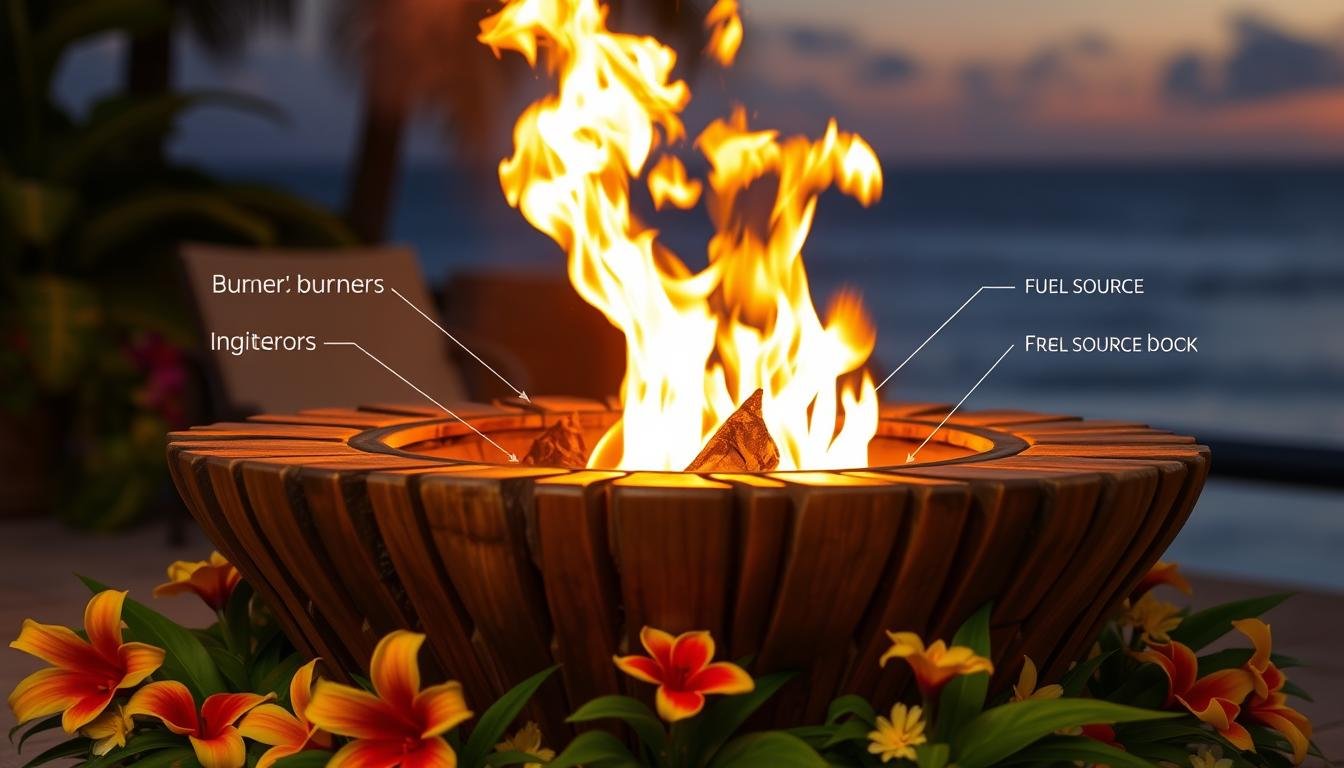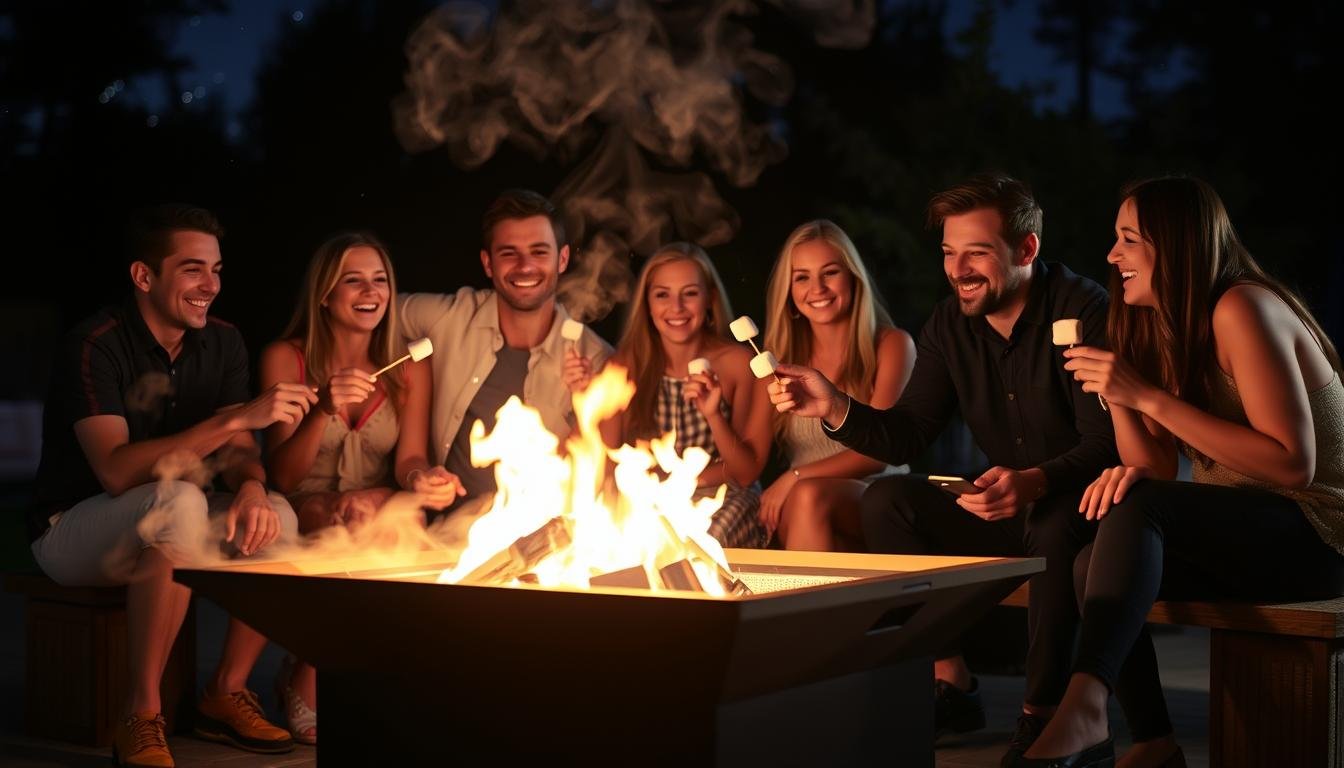Outdoor fire pits are a wonderful addition to any backyard, providing warmth and ambiance on chilly evenings. However, exposure to the elements can cause rust to form on metal surfaces, compromising their integrity.
When moisture meets metal, the result can be disastrous, leading to holes and rendering the pit unusable. Proper maintenance is key to extending the life of your outdoor fire feature for years to come.

By understanding the causes of rust and implementing effective prevention strategies, you can enjoy your outdoor fire pit for many seasons. This article will cover essential tips and tricks for maintaining your metal fire pit and restoring it if rust has already taken hold.
Understanding Rust Formation on Fire Pits
Rust on fire pits is not just an aesthetic issue; it’s also a matter of safety and durability. Rust formation occurs when metal comes into contact with oxygen and moisture, leading to a chemical reaction that weakens the metal over time.
The Science Behind Rust
The process of rusting is an electrochemical reaction that involves the transfer of electrons between the metal and oxygen in the presence of moisture. This reaction is accelerated by various environmental factors.
Environmental Factors That Accelerate Rusting
Several environmental factors contribute to the acceleration of rusting on fire pits. High humidity environments maintain constant moisture exposure, even without direct contact with water. Proximity to coastal areas with salt-laden air can dramatically accelerate rusting due to salt’s ability to enhance the electrochemical reaction. Additionally, rain and snow create direct water contact that initiates and accelerates the rusting process. Regional weather patterns, including fluctuating temperatures and high levels of rain or humidity, can also impact the rate of rust formation on a fire pit or pit.
Why Rust Prevention Matters for Your Fire Pit
The importance of rust prevention for your fire pit cannot be overstated, as it affects both its functionality and aesthetic appeal. Rust can compromise the structural integrity and safety of your fire pit, while also detracting from its appearance.
Structural Integrity Concerns
Rust can weaken the metal structure of your fire pit, potentially leading to holes or cracks. This deterioration can render the fire pit unsafe for use.
Safety Issues with Rusted Fire Pits
A rusted fire pit can pose safety risks, including the potential for structural collapse or the release of harmful substances. Ensuring your fire pit remains rust-free is crucial for safe operation.
Aesthetic Impact of Rust
A rust-laden fire pit can be an eyesore, diminishing the aesthetic appeal of your outdoor space. Rust can also stain surrounding surfaces, such as decking or paving stones, leaving difficult-to-remove marks.
- Rust dramatically changes the appearance of a once-attractive fire pit.
- Rust stains can transfer to surrounding surfaces.
- A rusted fire pit detracts from the overall aesthetic of an outdoor living space.

Essential Fire Pit Rust Prevention Techniques
One of the most effective ways to extend the life of your fire pit is by employing robust rust prevention strategies. Rust can significantly compromise the structural integrity and aesthetic appeal of your fire pit, making prevention crucial.
Strategic Placement and Storage Solutions
Proper placement and storage of your fire pit can significantly reduce the risk of rust. Using a weatherproof fire pit cover when not in use protects it from environmental elements that can accelerate rust formation.

Regular Cleaning and Maintenance Routines
Regular cleaning is vital for removing debris and moisture that can contribute to rust. Ensure you clean your fire pit after each use and perform a deeper clean periodically to maintain its condition.
Protective Coatings and Barriers
Applying a protective coating or barrier can effectively shield your fire pit from rust. Consider using a rust-inhibiting paint or a clear coat to protect the metal surface.
Using Heat Barriers to Prevent Rust
Using a heat barrier is a simple yet effective method to prevent rust on your fire pit. A layer of sand or lava rocks underneath the fire can protect the metal from extreme heat, reducing the risk of rust.
Extreme heat from direct flames can accelerate the breakdown of metal, making it more susceptible to rust. Heat barriers like sand, lava rock, or fire glass protect the metal surface from direct flame contact, thus preventing rust.
To install a heat barrier, choose the appropriate material based on your fire pit type and ensure the recommended depth is achieved for optimal protection.
Dealing with Existing Rust on Your Fire Pit
Dealing with existing rust on your fire pit requires a combination of early detection and effective removal techniques. Rust can significantly impact the longevity and safety of your fire pit, making it crucial to address the issue promptly.
Identifying Early Signs of Rust
Early detection of rust is vital to prevent extensive damage. Look for orange or yellowish flaking on the surface of your fire pit, which indicates the onset of rust. Regular inspections, especially after exposure to moisture, can help identify rust early.
DIY Rust Removal Methods
For minor rust issues, DIY removal methods can be effective. Use a wire brush or sandpaper to remove rust, followed by applying a rust-inhibiting coating. Chemical rust removers are also available but require careful handling due to their harsh chemicals.

When to Consider Professional Help
If the rust is extensive, consider seeking professional help. Experts have the necessary tools and knowledge to restore your steel gas fire pit. They can address structural issues, apply industrial-grade protective coatings, and ensure the fire pit is safe to use.
- Identify scenarios where professional rust removal services may be necessary.
- Professionals use specialized techniques and equipment not available to homeowners.
- Consider the cost-benefit analysis of professional restoration versus replacement.
Conclusion
Ensuring your fire pit remains rust-free is vital for years of enjoyable outdoor experiences. Throughout this article, we’ve explored various strategies to prevent rust, including strategic placement, regular cleaning, and protective coatings. By combining these techniques, you can significantly extend the life of your fire pit and maintain its safety and aesthetic appeal.
It’s worth noting that Corten steel fire pits are an exception, as they benefit from a controlled layer of rust that protects the metal. For other types of steel fire pits, proactive maintenance is key. Regular care not only enhances safety but also ensures that your outdoor fire experience remains enjoyable. Assess your fire pit condition today and take action if you notice any signs of rust or rusting. With consistent care, your fire pit will remain a cherished part of your outdoor gatherings for years to come.

John Carter is a firepit expert with 10+ years of experience in outdoor heating solutions. He specializes in firepit selection, installation, and maintenance, sharing tips on DIY projects, product reviews, and backyard entertainment. Passionate about creating cozy outdoor spaces, he helps homeowners choose the perfect firepit for their needs


